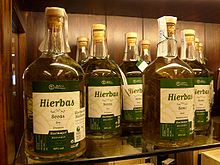
Gin is a distilled alcoholic drink that derives its flavour from juniper berries and other botanical ingredients.
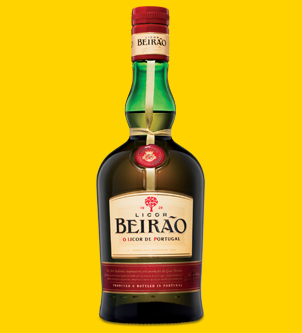
A liqueur is an alcoholic drink composed of spirits and additional flavorings such as sugar, fruits, herbs, and spices. Often served with or after dessert, they are typically heavily sweetened and un-aged beyond a resting period during production, when necessary, for their flavors to mingle.

Anise, also called aniseed or rarely anix is a flowering plant in the family Apiaceae native to the eastern Mediterranean region and Southwest Asia.
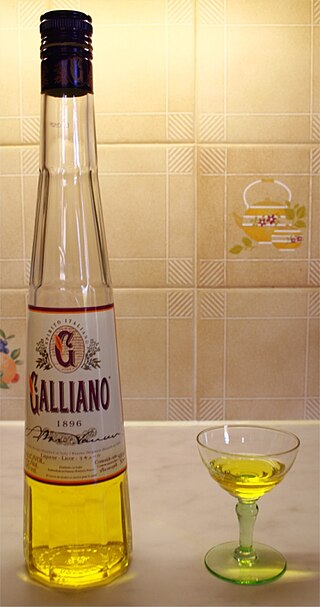
Liquore Galliano L'Autentico, known more commonly as Galliano, is a brand of sweet herbal liqueur produced in Italy. It was created in 1896 by Tuscan distiller and brandy producer Arturo Vaccari and named after Giuseppe Galliano, an Italian officer of the Royal Italian Army of the First Italo-Ethiopian War.

Pastis is an anise-flavoured spirit and apéritif traditionally from France, typically containing less than 100 g/L sugar and 40–45% ABV.

Anisette, or Anis, is an anise-flavored liqueur that is consumed in most Mediterranean countries. It is colorless, and because it contains sugar, is sweeter than dry anise flavoured spirits. The most traditional style of anisette is that produced by means of distilling aniseed, and is differentiated from those produced by simple maceration by the inclusion of the word distilled on the label. And while Pastis is a similar-tasting liqueur that is prepared in similar fashion and sometimes confused with anisette, it employs a combination of both aniseed and licorice root extracts. Sambuca is essentially an anisette of Italian origin that requires a high minimum (350g/L) sugar content.

A bitters is traditionally an alcoholic preparation flavored with botanical matter for a bitter or bittersweet flavor. Originally, numerous longstanding brands of bitters were developed as patent medicines, but now are sold as digestifs, sometimes with herbal properties, and as cocktail flavorings.

Aguardente (Portuguese), or aguardiente (Spanish), is a type of distilled alcoholic spirit that contains between 29% and 60% alcohol by volume (ABV). It is a somewhat generic term that can refer to liquors made from various foods. It originates from and is typically consumed on the Iberian Peninsula and in Iberian America.

Sobrassada in Catalan or Sobrasada in Spanish, is a raw, cured sausage from the Balearic Islands (Spain) made with ground pork, paprika, salt and other spices. Sobrassada, along with botifarró, are traditional Balearic meat products prepared in the laborious but festive rites that still mark the autumn and winter pig slaughter known as a matança in Minorca, Majorca and Ibiza. The chemical principle that makes sobrassada is the dehydration of meat under certain weather conditions which are typical of the late Balearic autumn.

Bénédictine is a herbal liqueur produced in France. It was developed by wine merchant Alexandre Le Grand in the 19th century, and is reputedly flavored with twenty-seven flowers, berries, herbs, roots, and spices.

Mama Juana is a spiced alcoholic beverage made by infusing a mixture of rum, red wine, and honey with tree bark and herbs. The taste is similar to port wine and the color is a deep red. It originates in the Dominican Republic.

Génépi or génépy or genepì is a traditional herbal liqueur or aperitif popularized in the Alpine regions of Europe. Genepi also refers to alpine plants of the genus Artemisia that provide the liqueur's flavor and color, and the French Savoy region adjacent to the Aosta Valley, where the Artemisia genepi plants grow and where the beverage is commonly produced.
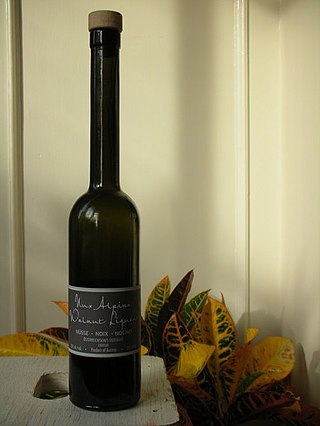
Nocino is a dark brown liqueur from the Emilia-Romagna region in northern Italy. It is made from unripe green walnuts. The walnuts and the liquor are handled using ceramic or wooden tools and placed in an alcoholic base. After steeping in spirit, the walnuts are removed and the alcohol is mixed with simple syrup. Nocino has an aromatic but bittersweet flavor. It may be homemade; villages and even individual families often have their own recipes, including different additions like cinnamon, juniper berries, lemon or orange zest, vanilla pods, coffee beans, or clove. The spices are added lightly, to avoid overpowering the flavour of the walnuts. The classic base consists of pure alcohol but vodka can also be used. Nocino is also available commercially in bottled form. Commercially available nocino is typically 40 percent alcohol by volume, or 80 proof.
Flavored liquors are liquors that have added flavoring and, in some cases, a small amount of added sugar. They are distinct from liqueurs in that liqueurs have a high sugar content and may also contain glycerine.

Amaro is an Italian herbal liqueur that is commonly consumed as an after-dinner digestif. It usually has a bitter-sweet flavour, sometimes syrupy, and has an alcohol content between 16% and 40%.

A cordial is any invigorating and stimulating preparation that is intended for a medicinal purpose. The term derives from an obsolete usage. Various concoctions were formerly created that were believed to be beneficial to one's health, especially for the heart.
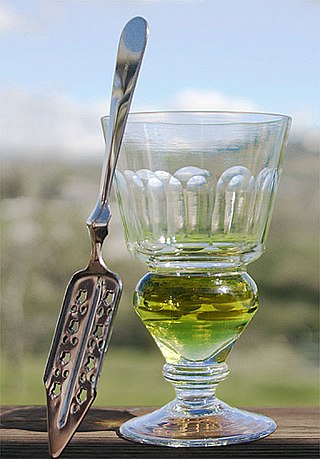
Absinthe is an anise-flavored spirit derived from several plants, including the flowers and leaves of Artemisia absinthium, together with green anise, sweet fennel, and other medicinal and culinary herbs. Historically described as a highly alcoholic spirit, it is 45–74% ABV or 90–148 proof in the US. Absinthe traditionally has a natural green color but may also be colorless. It is commonly referred to in historical literature as la fée verte. It is sometimes mistakenly referred to as a liqueur, but is not traditionally bottled with added sugar, so is classified as a spirit. Absinthe is traditionally bottled at a high level of alcohol by volume, but it is normally diluted with water before being consumed.
Majorca or Mallorca is a Balearic Island, part of Spain, located in the Mediterranean.

Hierbas is an aniseed-flavored Spanish liqueur served as a digestif.
